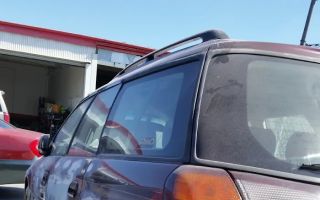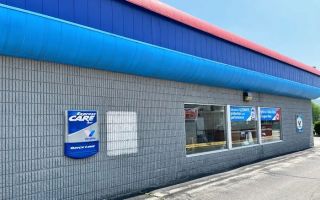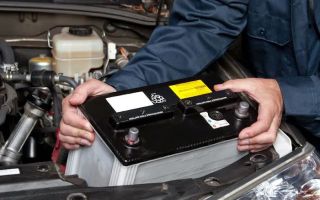How Do I Check Tire Pressure After a Flat Repair? A Detailed Guide for Car Owners
1. Why Checking Tire Pressure After a Flat Repair is Crucial
When you experience a flat tire and get it repaired, it’s not enough to simply resume driving. Tire pressure plays a critical role in vehicle safety, handling, and performance. It’s important to check the tire pressure after any flat repair to ensure your tire is properly inflated and ready for safe driving.
Many car owners overlook this step, but failing to check tire pressure can lead to uneven wear, increased risk of blowouts, and reduced fuel efficiency. Regardless of whether you’ve fixed the tire yourself or had professional roadside assistance, this guide will show you how to check the tire pressure correctly and avoid future issues.
2. How Tire Pressure Impacts Vehicle Performance
Maintaining the correct tire pressure isn’t just about making sure your tires are “inflated” – it’s about balancing safety and performance. Proper tire pressure is essential for optimal vehicle control, fuel economy, and tire longevity.
- Safety: Tires that are either overinflated or underinflated can significantly reduce your car's ability to grip the road, increasing the risk of accidents.
- Fuel Economy: Underinflated tires create more friction, which makes your engine work harder, reducing fuel efficiency. Proper tire pressure improves gas mileage.
- Even Wear: Over time, improper pressure causes uneven tire wear, shortening the lifespan of your tires and leading to costly replacements.
Proper tire pressure ensures that your tires wear evenly, perform better, and last longer. Checking it after a flat repair is one of the simplest ways to protect your investment and avoid unnecessary repairs.
3. When to Check Tire Pressure After a Flat Repair
Timing is everything when it comes to checking tire pressure. After a flat tire repair, it’s crucial to wait until the tire has cooled down before taking a reading. Here’s why:
- Cold Tire Pressure: The most accurate tire pressure reading is taken when the tire is cold, typically after your car has been parked for several hours.
- After Driving: If you check tire pressure immediately after driving, the heat generated by friction can increase the pressure, giving a misleading reading.
For the most precise measurement, wait until the tire is cool before using a tire pressure gauge. This ensures you’re getting an accurate reading of your tire’s true pressure.
4. Tools Needed to Check Tire Pressure
To check tire pressure accurately, you'll need a reliable tire pressure gauge. There are a few different types to choose from, and each offers its own advantages:
- Manual Tire Pressure Gauge: This basic tool requires you to manually read the pressure, but it’s affordable and simple to use.
- Digital Tire Pressure Gauge: A more advanced option, digital gauges display tire pressure on an easy-to-read screen, providing quick and accurate results.
- Dial Tire Pressure Gauge: This combines the best of both worlds – providing a digital reading with an analog dial for extra precision.
Regardless of the type of gauge, it’s important to choose one that you’re comfortable using and ensures an accurate reading. A good tire pressure gauge is an investment in your vehicle’s safety and longevity.
5. Step-by-Step Guide to Checking Tire Pressure After a Flat Repair
Now that you’re equipped with the right tools, here’s how to check your tire pressure after a flat repair:
- Step 1: Make Sure the Tire is Cool: Wait at least 3 hours after driving to ensure the tire is cool for an accurate reading.
- Step 2: Remove the Valve Cap: Take off the valve cap from the tire’s valve stem and set it aside in a safe place.
- Step 3: Attach the Pressure Gauge: Press the tire pressure gauge firmly onto the valve stem. You should hear a brief hiss of air escaping – this is normal.
- Step 4: Read the Pressure: Check the gauge to get your reading. Digital gauges display the pressure instantly, while manual and dial gauges will show the measurement on the scale.
- Step 5: Compare with the Recommended Pressure: Refer to your vehicle's manual or the sticker inside the driver's door frame to find the recommended tire pressure. If it doesn’t match the reading, it’s time to adjust.
- Step 6: Adjust the Pressure: If necessary, use an air compressor to inflate or deflate the tire to the proper pressure. Be sure to check the pressure again afterward to confirm.
These simple steps will ensure that your tire pressure is optimal for safe and efficient driving after a flat tire repair.
6. A Real-World Example: The Importance of Checking Tire Pressure
Consider this real-life example: Sarah, a driver from California, was stranded on the side of the highway after experiencing a flat tire. After calling a roadside assistance service, the tire was repaired on-site. However, Sarah forgot to check the tire pressure after the repair. The next day, while driving on the freeway, she felt the car pulling to one side and realized the tire pressure was uneven. This led to a dangerous driving situation and an expensive second trip to the mechanic.
Had Sarah checked her tire pressure after the flat repair, she could have avoided the problem entirely. This case serves as a reminder of the importance of performing a simple yet vital task after a tire repair.
7. How Regular Tire Maintenance Helps Avoid Future Issues
Checking tire pressure shouldn’t be a one-time task – it’s something you should make a part of your regular vehicle maintenance routine. By checking your tire pressure regularly, you can avoid future issues such as blowouts, poor handling, or costly repairs. In addition to tire pressure checks, consider the following maintenance practices:
- Regular Tire Rotations: Rotating your tires every 6,000 to 8,000 miles ensures even wear and prolongs the life of your tires.
- Visual Inspections: Look for visible signs of damage, such as cracks or bulges, that could indicate an issue with the tire.
- Alignment Checks: If your car pulls to one side, it may be a sign that your alignment is off, which can cause uneven tire wear.
By incorporating these practices into your routine, you’ll keep your car’s tires in top shape and avoid the hassle of unexpected breakdowns.
8. Why You Should Trust Professional Towing and Roadside Assistance Services
If you ever find yourself in a situation where you need roadside assistance or towing services after a flat tire repair, it’s essential to trust professionals who understand the importance of proper tire pressure. A reputable towing service can offer more than just towing – they provide tire repairs, tire pressure checks, and emergency assistance to ensure that your car is ready to drive safely.
Investing in a professional roadside assistance service can save you time, money, and stress in the long run. Whether it’s for a flat tire or any other emergency, a reliable service will have your back when you need it most.
If you’re looking for trustworthy towing services with tire repair capabilities, we offer reliable roadside assistance at competitive prices. Check out our services and special offers today to keep your car running smoothly!























